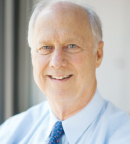Is there enough evidence to support the incorporation of weight management and physical activity interventions into an oncology practice? And if so, what is the best way to do it?
The answer to the first question was a resounding yes from oncologists, patient advocates, dietitians, public health experts, and others gathered at a recent workshop convened by the National Cancer Policy Forum of the National Academies of Sciences, Engineering, and Medicine in Washington, DC.
But answers to the second question—how best to implement weight management and physical activity programs in patient care—are still evolving. Presenters and panelists at the workshop, Incorporating Weight Management and Physical Activity Throughout the Cancer Care Continuum, explored the evidence base for interventions and for opportunities and challenges in implementing them.
Evidence Base
For clinicians, one of the first issues is what to tell patients: Will losing weight and increasing physical activity improve survival?

There has been a burgeoning of information relating to the benefits of physical activity and weight control in terms of cancer rehabilitation, symptom control, and general health promotion. I firmly believe in recommending losing weight to improve quality of life.— Pamela Goodwin, MD
Tweet this quote
An association between obesity and some cancers is clear, said Pamela Goodwin, MD, Director of the Marvelle Koffler Breast Centre at Mount Sinai Hospital in Toronto, who presented evidence linking weight and cancer outcomes. But whether that association is causative and will affect survival is still under study.
On the other hand, “there has been a burgeoning of information relating to the benefits of physical activity and weight control in terms of cancer rehabilitation, symptom control, and general health promotion,” she said. “I firmly believe in recommending losing weight to improve quality of life.”
Similarly, the evidence linking physical activity with cancer outcomes is promising but still not definitive enough to tell patients that if they adopt an exercise program, they will lower their risk of recurrence or improve their chance of survival, said Kerry S. Courneya, PhD, who is Director of the Behavioural Medicine Laboratory and Fitness Centre at the University of Alberta, Edmonton. Ongoing phase III trials could fill that gap.

Melinda L. Irwin, PhD, MPH
Meanwhile, other trials of exercise and weight management among cancer survivors are looking at endpoints such as quality of life, fatigue, fitness, body weight, lymphedema, sleep, and joint pain. Melinda L. Irwin, PhD, MPH, Associate Director, Population Sciences, at Yale Cancer Center and Professor at Yale School of Public Health, New Haven, Connecticut, described trials of telephone-based and group-based weight management interventions, for example, which have shown that both approaches can be effective.
Most recently, a meta-analysis of 34 trials1 found an improvement in quality of life among cancer patients taking part in exercise programs. Published in January 2017, the findings included improvements in cancer-related fatigue, the most commonly reported side effect among cancer survivors. Although effect sizes were small, there was “consistent evidence to support implementation of exercise as part of cancer care,” Dr. Irwin said.
From Efficacy to Effectiveness

Jennifer A. Ligibel, MD
While the outcomes of these and other trials of specific interventions in specific cancers will be valuable, they are likely to leave questions about implementation unanswered, said Jennifer A. Ligibel, MD, Senior Physician in the Susan F. Smith Center for Women’s Cancers at the Dana-Farber Cancer Institute, Boston. Most importantly, will they provide a path to widespread dissemination among cancer survivors?
This is a significant question because even with good evidence of a program’s efficacy in a clinical trial, it can be challenging to translate that program into effective, real-world clinical practice.

Kathryn Schmitz, PhD, MPH
Kathryn Schmitz, PhD, MPH, Associate Director of Population Sciences at Penn State College of Medicine, Hershey, Pennsylvania, described the challenges that confronted a program called Strength After Breast Cancer, a weight-training program designed to reduce lymphedema in breast cancer survivors who have had lymph nodes removed.
The program was based on a randomized clinical trial, the Physical Activity and Lymphedema (PAL) study, which showed that weight training had significant benefits, including a 50% reduction in flare-ups of lymphedema. But when the program was first implemented outside the trial, clinic staff found that patients were deterred by travel requirements and cost, that physician referrals were getting lost or ignored, and that triage and follow-up procedures had to be fine-tuned.
After revising the program to include training for providers and patients, active follow-up after referrals, and other modifications, Strength After Breast Cancer outcomes matched those of the PAL trial. The clinical program, now called Strength ABCs, is available at multiple locations and paid for by private insurance and Medicare, with training available online.

Matt Longjohn, MD, MPH
Another model for effective care delivery comes from YMCAs around the country. Matt Longjohn, MD, MPH, Vice President and National Health Officer of Y-USA, headquartered in Chicago, described the Livestrong at the YMCA program, which trains local YMCAs to deliver a program tailored to cancer survivors. Funded through grants, the program provides 12-week, small-group training sessions that include cardiovascular conditioning, strength training, flexibility, and balance exercises.
A study on the impact of the program found that in comparison to a control group, participants experienced significant increases in physical activity, overall quality of life, and fitness performance, as well as decreases in cancer-related fatigue.2

William H. Dietz, MD, PhD
Training for clinicians can be a major factor in the successful implementation of programs, said several speakers. A resource developed by the Strategies to Overcome and Prevent (STOP) Obesity Alliance teaches providers how to open a conversation about losing weight “without turning off the patient,” said William H. Dietz, MD, PhD, Director of the Alliance and of the Redstone Global Center for Prevention and Wellness at the George Washington University Milken Institute School of Public Health, Washington, DC. The Alliance’s Why Weight? guide teaches communication strategies, including ways to open a conversation about weight, be sensitive to signs of stigma and bias regarding obesity, and promote shared decision-making.
Resources for clinicians are also available through ASCO, which made obesity and cancer one of its core initiatives in 2014.3 In addition to a position statement, ASCO has published Obesity and Cancer: A Guide for Oncology Providers and Managing Your Weight After a Cancer Diagnosis: A Guide for Patients and Families. Both can be accessed online or ordered in hard copy through the ASCO University Bookstore (shop.asco.org).
In different ways, speakers and panelists at the workshop said that the time was right to move forward with weight management and physical activity programs for cancer survivors.
“We know a lot,” said Dr. Goodwin, moderating the final session of the workshop. “Doing nothing is not an option anymore.”

Wendy Demark-Wahnefried, PhD, RD
Workshop Chair Wendy Demark-Wahnefried, PhD, RD, Associate Director, Cancer Prevention and Control, at the University of Alabama, Birmingham, put it another way. “Let’s get moving,” she said. “It’s time!”
For more information on the workshop, visit www.nationalacademies.org/hmd/Activities/Disease/NCPF/2017-FEB-13.aspx.■
Disclosure: Drs. Goodwin, Courneya, Irwin, Ligibel, Longjohn, Dietz, and Demark-Wahnefried reported no conflicts of interest.
References

